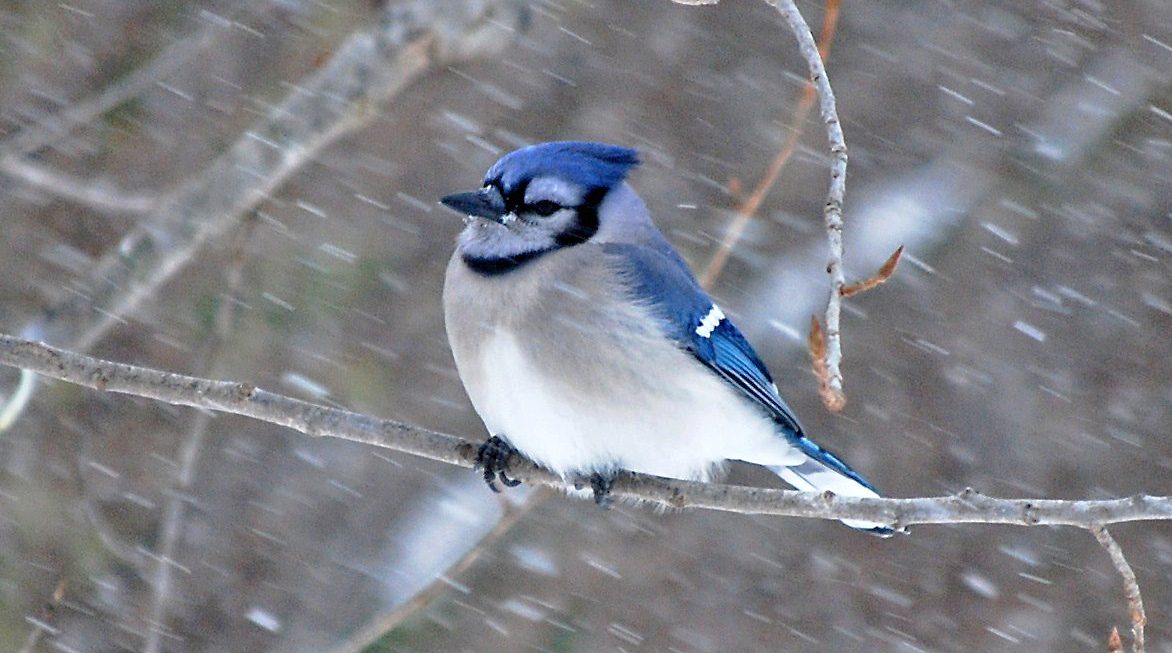What do small birds do in a storm?

Different birds use different ways to wait out a storm. Birds that normally roost in a cavity—such as chickadees, small owls, woodpeckers—hide out in their cavity. They may also use roost boxes. Sometimes more than a dozen birds will pile into a single box to conserve heat.
Birds that roost on branches, such as jays, sparrows, cardinals, crows, etc, tend to perch on a thick branch very close to the trunk on the side most protected from wind and rain. When these songbirds (also called “perching birds”) are relaxed, their feet grasp automatically, so they can sleep while tightly clasping the branch.
Ducks, herons, and other birds that sleep on or near the water tend to find as sheltered a spot as possible—many swimmers stay out in the open water, and waders tend to gather near some debris or vegetation that protects them from at least some of the rain and wind.
What you can do for backyard birds during the winter
You can help your backyard birds keep warm overnight with a specially designed roost box. Any backyard favorites that typically nest in boxes—bluebirds, chickadees, titmice, nuthatches, and small woodpeckers—may seek refuge in it. You can either build a special roost box or modify a nest box.
You can also create bird friendly winter gardens by providing food, shelter and water. Learn more about different native plants that are natural food sources for birds, and find out other ways you can support your backyard wildlife.

All About Birds
is a free resource
Available for everyone,
funded by donors like you
American Kestrel by Blair Dudeck / Macaulay Library
